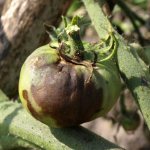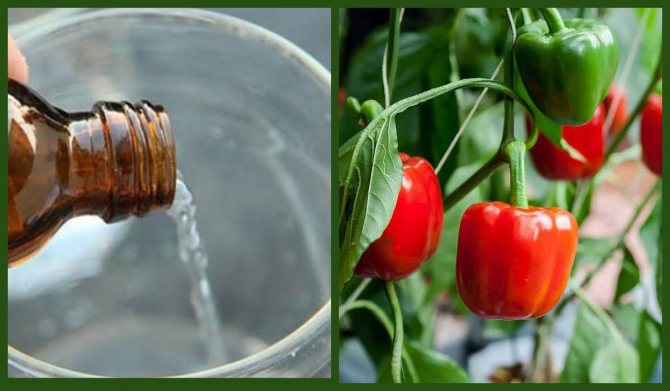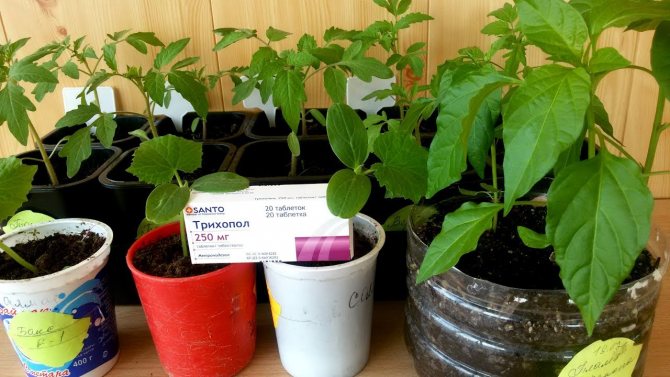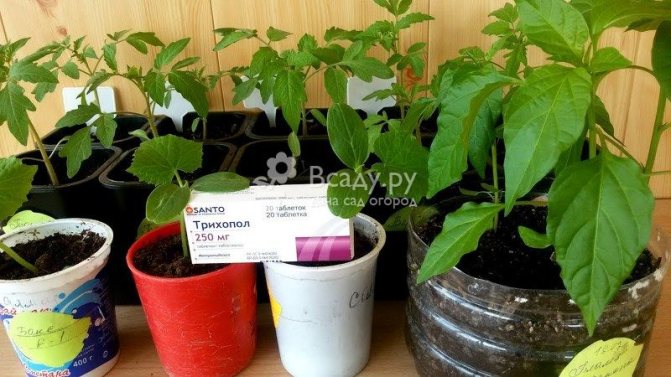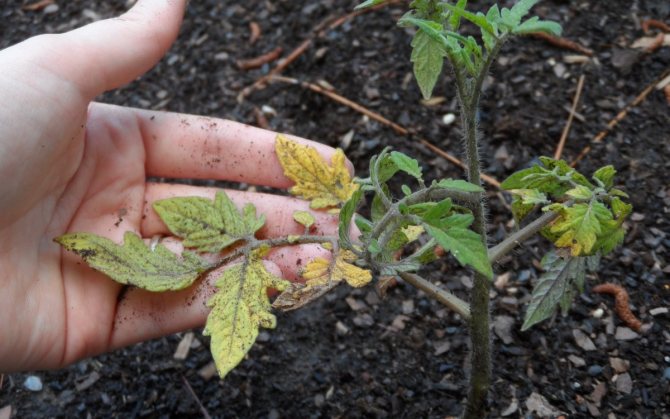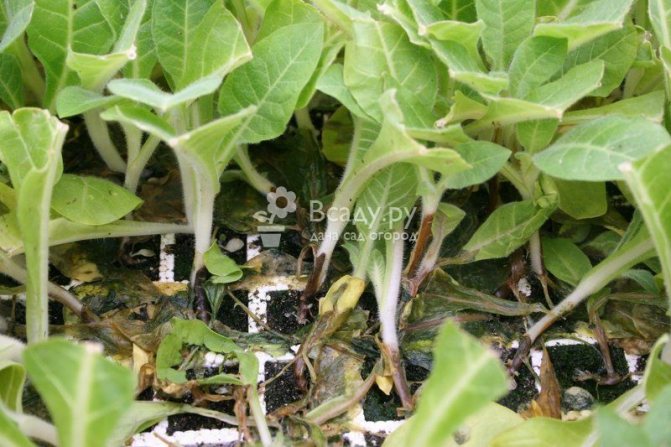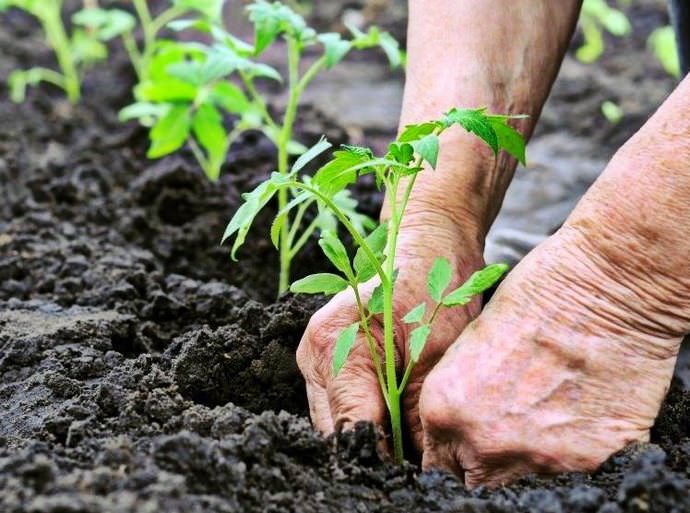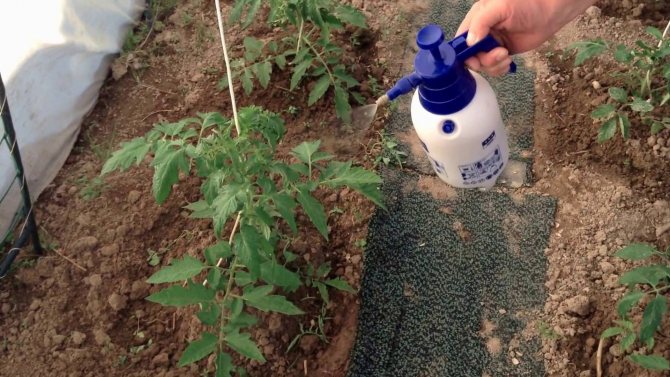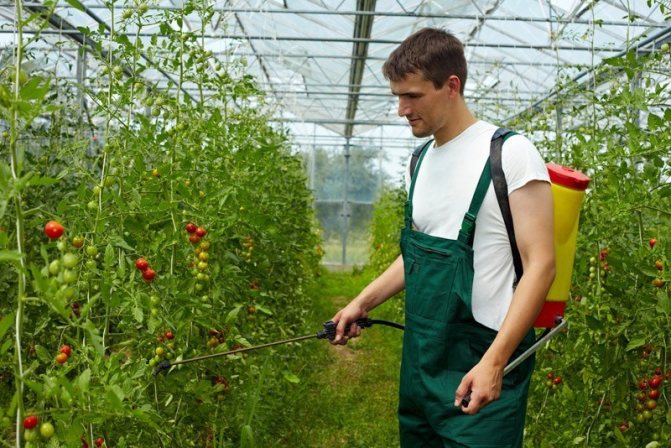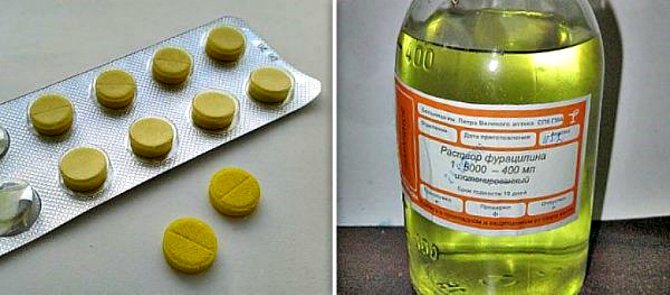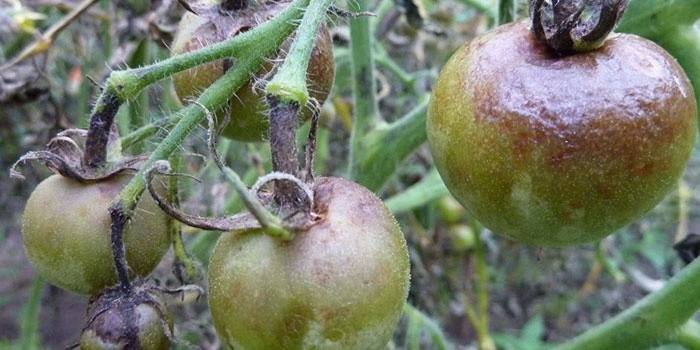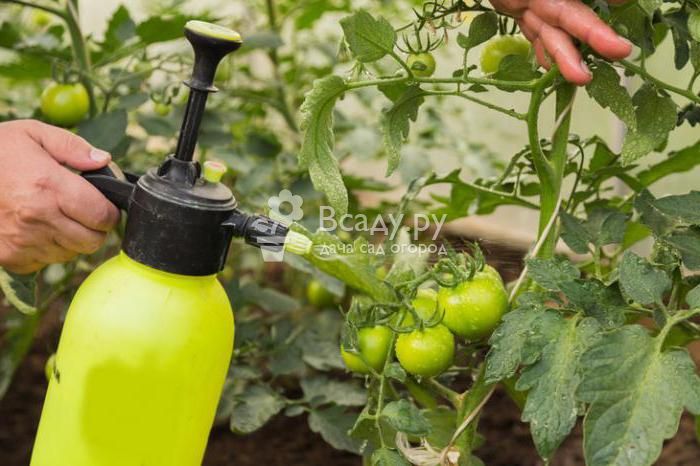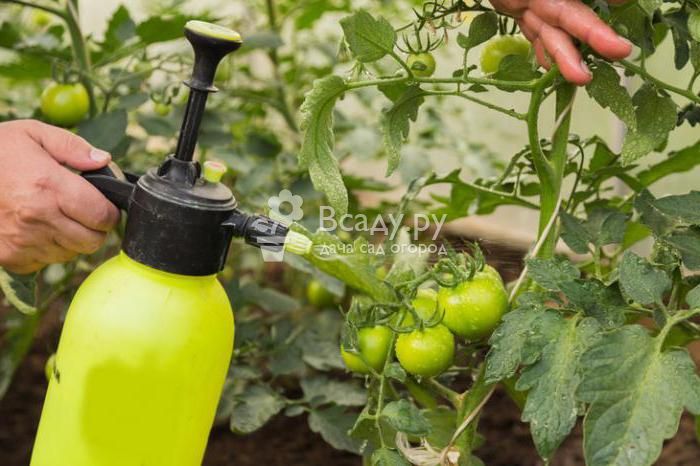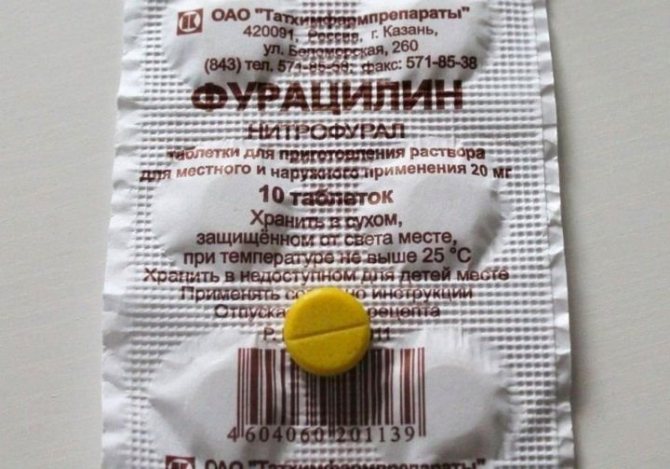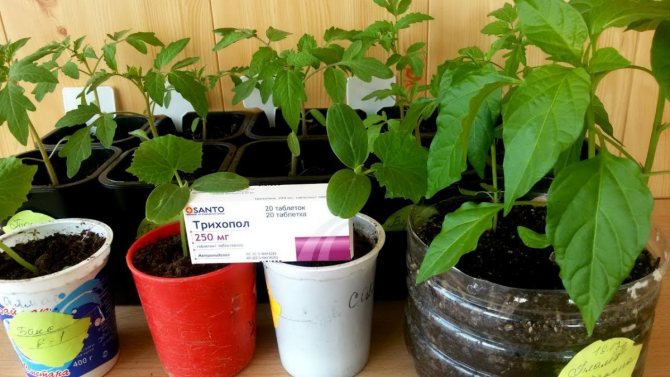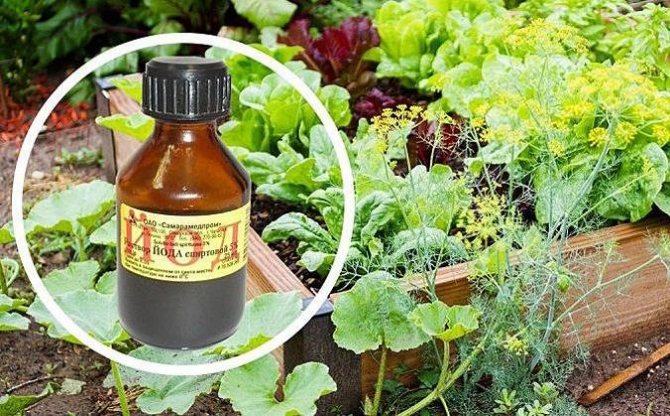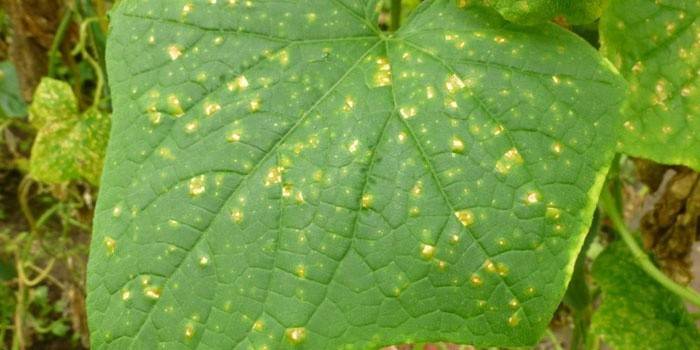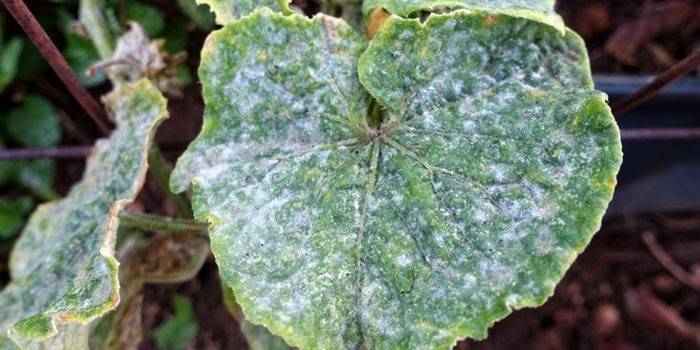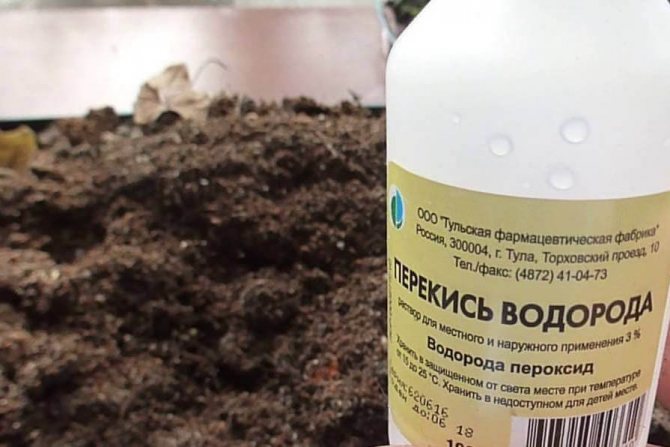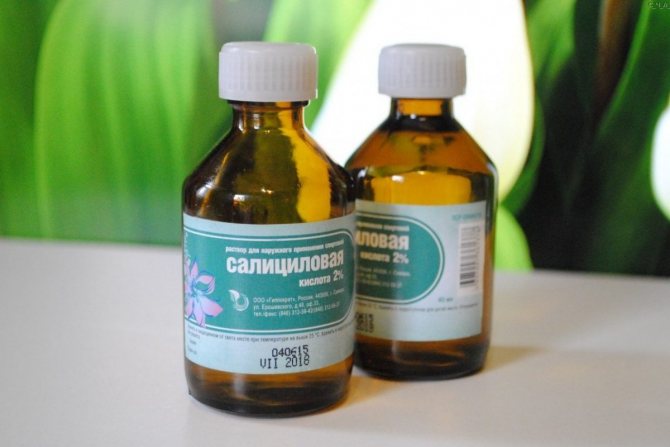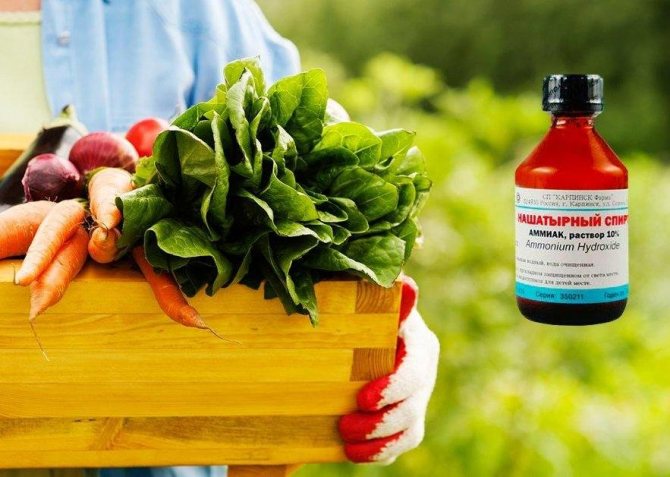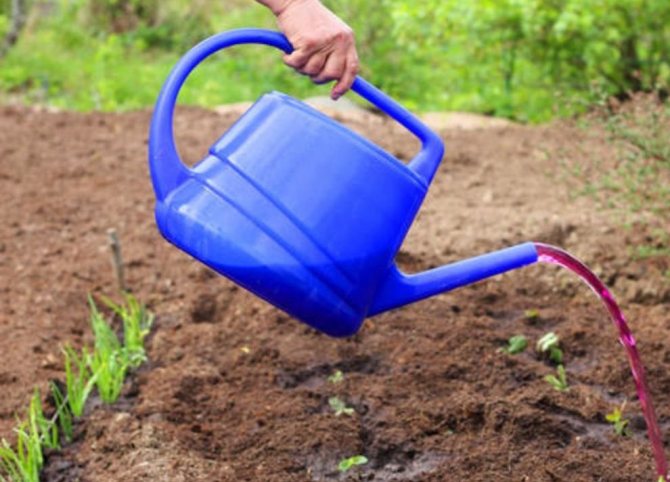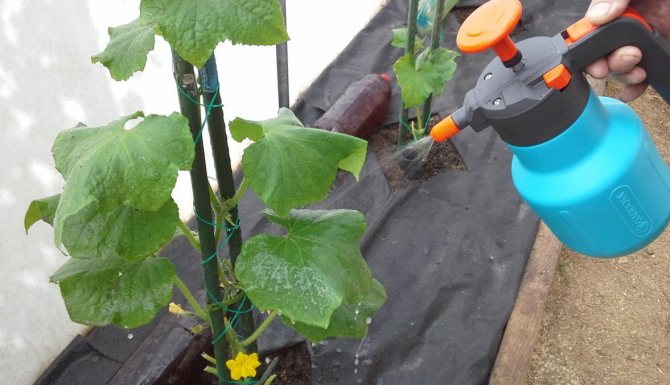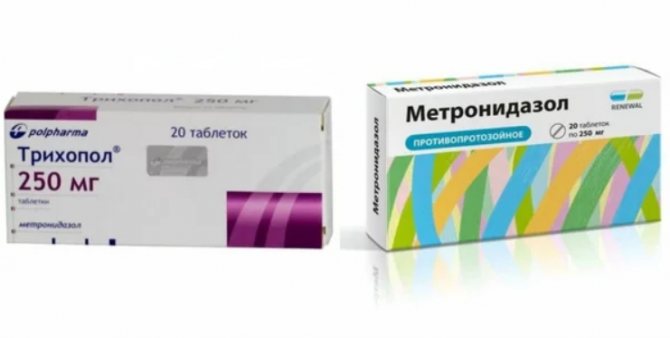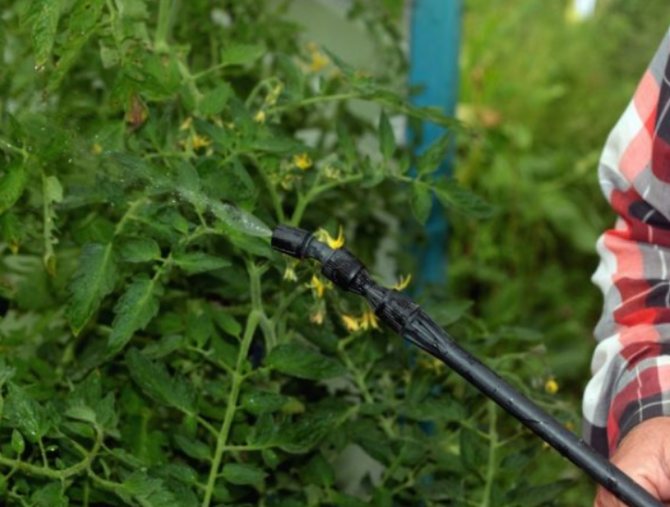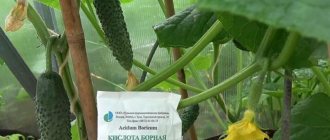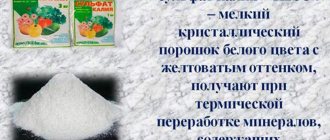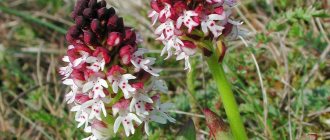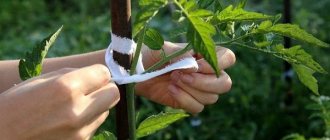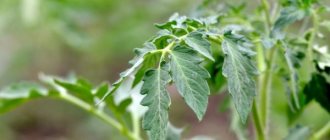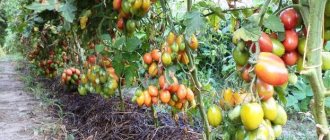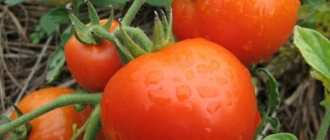Description and release form
For the most part, drugs for late blight can be used before the start of fruit ripening. In addition, they are quite poisonous and chemically unsafe.
And only recently have people thought of using drugs intended to treat people in the fight against this problem at different stages of plant development.
"Trichopol" - one of these drugs used for late blight on tomatoes. It is produced in the form of white tablets of a slightly yellow hue, 250 mg of metronidazole in each. This drug is widely available in any pharmacy.
To begin with, a brief medical certificate. Trichopolum is an antibacterial drug derived from nitromidazole. As you can see, this is a pharmacy drug, you can find two of its varieties - trichopolum and metronidazole. In medicine, they are successfully used to treat people from bacterial infections.
Composition of the preparation
Trichopolum is a fairly well-known drug, widely used in medicine due to the presence of such an active substance as metronidazole. Auxiliary components are potato starch, gelatin, starch syrup and magnesium stearate.
Along with some other medicines, Trichopolum, or Trichopol, quite actively used in home gardening and horticulture, allowing you to effectively protect plants from pathogenic microflora. The main condition for effective use is compliance with the terms and scheme of processing plants with this tool.
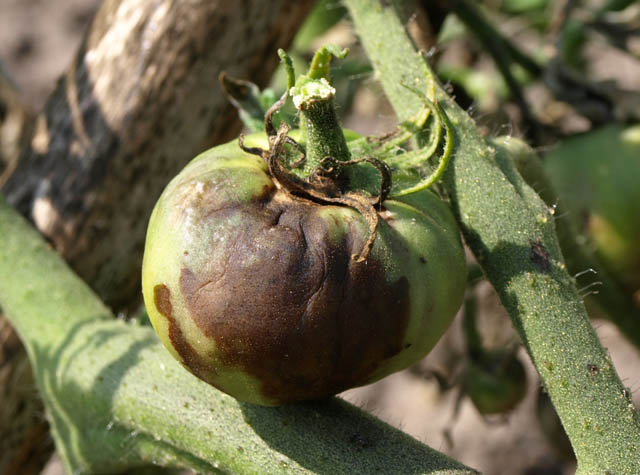
What to do when the first signs of late blight appear
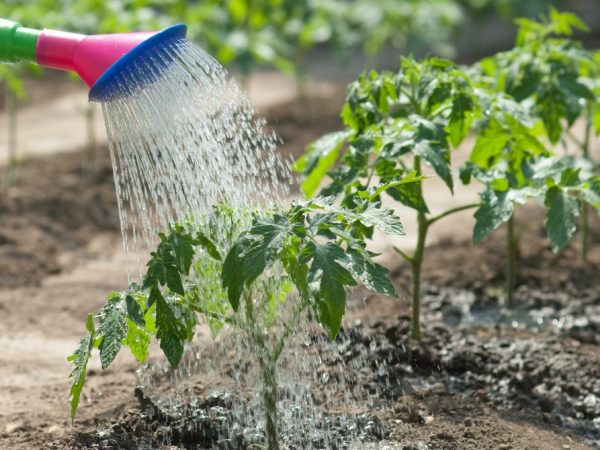

Phytophthora mycelium spreads in the intercellular space of plant tissues. The incubation period of the disease, depending on weather conditions, can last from 3 to 14 days. On wet, warm days, signs of infection appear much faster. The disease manifests itself as follows:
- Dirty gray and black spots form on the leaves.
- On plants, inflorescences begin to actively turn yellow and black.
- Subcutaneous brown spots appear on existing fruits.
- Dark spots appear on the stems of plants.
Very rapid spread is another sign that characterizes late blight of tomatoes. Treatment should therefore be carried out as quickly as possible. If only one bush gets sick, after a few days others will also turn black.
What can be done for tomatoes in this case? First of all, you need to assess the damage done by the insidious enemy. If only a few plants are damaged, all diseased plant parts should be removed. If the disease has gone far and there are a lot of damaged leaves and fruits, such bushes should be removed without pity. All infected plant parts must be removed from the site and burned.
Attention! It is possible to remove damaged leaves, as well as healthy stepchildren, only at low air humidity.
Use in the fight against the following diseases
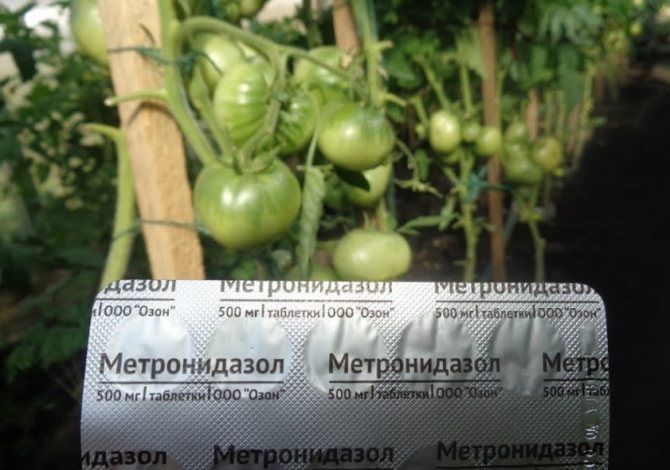

Metronidazole - this is the name of the main active ingredient in the composition, tablets with this name are an order of magnitude cheaper
Trichopolum is recommended for use against such diseases:
- Phytophthora... One of the most dangerous diseases affecting the ground part of plants and fruits. They turn black and die off within a short amount of time.It occurs at high air humidity and significant temperature changes during the day.
- Powdery mildew... Another dangerous fungal disease, which is transmitted in different ways: with water during irrigation, through a working tool and through the air. The leaves begin to turn yellow and wither, the growth and development of the plant stops.
- Fusarium... It affects the root system of the plant, penetrating with moisture through the soil. Causes the depletion of the ground unit and its death. The disease is dangerous for both tomatoes and cucumbers.
- Angular spotting... A very dangerous bacterial infection that affects fruits and leaves. The plant first ceases to bear fruit, and then dies.
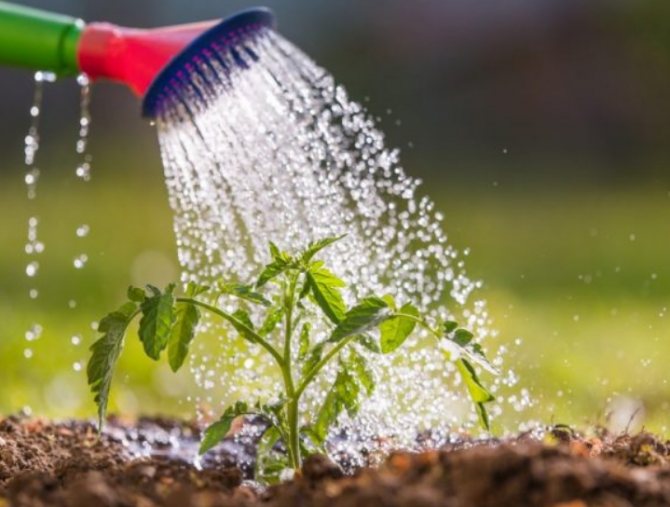

The drug can be used both for foliar processing, and for irrigation, to disinfect the soil.
Indications for treatment
What to do in the event that prevention did not help, and the plants still became infected? You can try to save the tomato crop using both chemical and biological or folk remedies. The drugs of the first type are somewhat more effective and faster.
However, when using them, the crop loses in terms of environmental safety. Biologics are not as effective, but they are completely harmless.
Therefore, they are usually used in combination with folk remedies.
Metronidazole or Trichopolum is an antibacterial drug that is used to treat many diseases in humans. It also effectively treats fungal infections. Suppresses metronidazole and the development of fungal infections on plants, including tomatoes.
To combat late blight, there are many means, both based on chemicals and folk. Most of them should be used prophylactically, long before signs of the disease appear.
But if it did not work out on time, or if such climatic conditions developed - cold weather and prolonged rains, in which all the measures taken were ineffective, you have to resort to therapeutic measures for already diseased tomatoes.
In the early stages of cultivation, cucumbers are highly susceptible to infections. In this case, the following composition can be recommended for preventive treatment: 15 drops of iodine, 10 grams of grated laundry soap, 1 liter of milk for five liters of water.
Irrigate plants with this composition every ten days after planting. The composition is absolutely harmless and readily available, however, it will help protect plants from diseases in the early stages.
If, when examining the plantings, the gardener found pale specks on the leaves of cucumbers, which then darken, it means that peronosporosis has appeared. The reason could be high humidity, thickening of the plantings, or the plants were watered with too cold water. If treatment is not urgently started, the tops will dry out, and the cucumbers themselves will become pale and tasteless.
Trichopolum (metronidazole) is able to save from this disease. Before starting treatment, it is necessary to stop watering and feeding with any fertilizers.
For spraying, a solution is required: twenty tablets of trichopol (metronidazole) in a bucket of water. The effect of the drug will be effective if the air temperature in the greenhouse is at least 25 degrees, and in the open field the cucumbers should be covered after spraying.
Cucumbers can be eaten only a week after spraying.
When to use
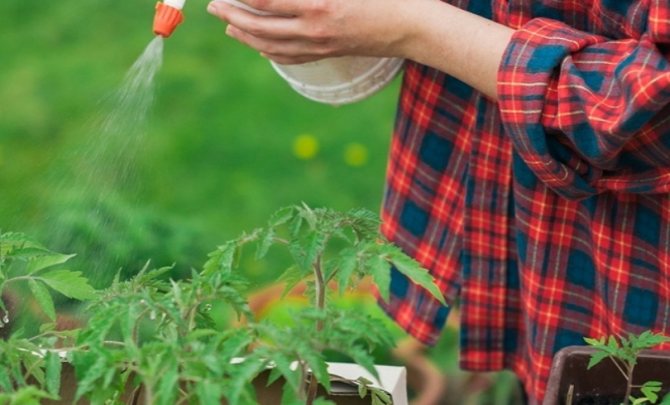

It is important to process the seedlings several times for protection.
You need to use the tool according to the following scheme:
- When preparing seeds for planting... They are soaked in solution for half an hour.
- Spraying plants immediately after diving... During this period, seedlings need protection, since they are especially vulnerable.
- Processing immediately after planting in a greenhouse or open ground.
- Watering in early summer... One watering with plain water can be replaced with Trichopolum solution in order to protect the root part, which is often affected during this period.
- Spraying in the middle of summer... This is the final stage of prevention.
- On defeat diseases are treated every 10 days until the problem is destroyed.
How to replace with more gentle means
Currently, ecologically clean, natural vegetable and berry products are in great demand, therefore vegetable growers and gardeners are increasingly thinking about replacing strong chemicals with harmless means. In addition to trichopolum, it is possible to fight late blight in a backyard or garden plot in other, rather effective and affordable ways.
| Method name | Preparation of funds | Application rules |
| Kefir or whey solution | 500 ml of kefir or whey, a glass of Pepsi-Cola or Coca-Cola to dissolve in a bucket of warm water | Spraying tomato seedlings twice before planting in a permanent place |
| Kefir or whey and warm water mixed in a 1: 1 ratio | Weekly processing of adult tomato bushes | |
| Milk iodine composition | In a bucket of water, dilute 1 liter of kefir or skim milk and add about 20-25 drops of iodine | Spraying the aerial part in the morning hours twice a month |
| Saline solution | Dissolve 500 g of table salt in 5 liters of water at room temperature | Treat the affected areas with late blight, as well as spray the tomato bushes themselves |
| Manure infusion | Thoroughly dilute a quarter of a kilogram of manure in 6 liters of settled water and leave for 24 hours | Treatment two weeks after planting seedlings and re-spraying after another two weeks |
| Mushroom infusion | Grind any kind of wood tinder fungus and pour boiling water over it at the rate of 1 liter for every 100 g of mushroom gruel | Spraying the aerial part in the morning hours twice a month |
| Iodine solution | Dilute 5 ml of 5% pharmaceutical iodine in 5 liters of water at room temperature | Twice spraying of tomato bushes with an interval of three days |
| Yeast processing | Dissolve 100 g of baker's yeast in one bucket of warm water and leave for two hours | Spraying the aerial part of a tomato bush several times per season |
Among all the variety of means to combat late blight on the site, special attention should be paid to this particular drug. "Trichopol" has an effective effect and at the same time is relatively safe for fruits. The features of the use of this tool, as well as important points of the preparation of the solution, are described in the information of our article.
Description of the disease
Representatives of the nightshade family are susceptible to late blight. These are tomatoes, potatoes and eggplants.
Phytophthora spores can be present in the ground, on planting material and weeds. You can accidentally bring phytophthora along with new soil or plant debris.
There are frequent cases of migration of this fungus by air, for example, from a neighboring area. It is necessary to fight this scourge immediately, otherwise literally in a week there will be no trace of the lush bushes.
The first signs of late blight can be seen when examining the lower leaves of the plant. They are covered with brown - black spots that rapidly increase in size, affecting the stem and fruits. In the later stages, the plant can no longer be saved and the best way out is to remove it from the site and burn it in order to prevent the spread of the infection throughout all plantings.
First treatments
The use of "Trichopolum" for the treatment of plants should be in advance. If the signs of the disease are already visible to the naked eye, then it may be too late. Based on experience and numerous experiments, gardeners have come up with the perfect schedule to help protect your plantings. Do not forget that the disease spreads very quickly, so you should not delay processing. Carry out preventive treatments on time:
- The first is when sowing seeds.There are two options here, soak the seeds in the solution or shed the soil immediately after planting them.
- The second - during the picking of seedlings.
- The third is when transplanting into open ground or a greenhouse.
Such measures prevent the insidious fungus from settling on plants and prevent the spread of its population.
The use of potassium permanganate
Plants are treated with metronidazole in two ways:
- Spraying.
- Watering.
Spraying
In the case of spraying, the substance acts faster and more intensely. A solution is prepared for this treatment.
It will take 10 tablets of Trichopolum to dissolve in 10 liters of water, it is good to use warm water with a temperature of 25-35 ° C. If this amount is not needed, you can cook less.
The main thing is to keep the dosage of 1 tablet per 1 liter of water. Spray the entire plant thoroughly.
Processing is carried out in dry weather, in the afternoon.
You can also carry out soil treatment; for this, a less concentrated solution is prepared. 5 tablets are enough for one bucket of water. Pour the bushes with a solution, first you need to water the garden with clean water. In especially severe cases with hyperactive development of the disease, both methods of processing are combined. Watering and spraying of cucumbers is carried out at the same time.
Trichopolum is used as a preventive measure against diseases. To do this, prepare a weak solution (3 tablets per 10 liters of water), and spray the bushes every 10 days.
Trichopolum is indicated for use in the treatment of various bacterial diseases in humans. But in the agricultural sphere, it has recently begun to be used to treat late blight.
At the same time, Trichopolum helps to defeat a number of other diseases that are no less dangerous for tomatoes: powdery mildew, fusarium, angular spotting.
Therefore, "Trichopol" in use for plants has its own instructions for use, drawn up on the basis of practical experience in the fight against diseases and the results obtained.
It has an unusually effective effect on fungi that induce late blight due to its ability to inhibit these microorganisms and a very bitter taste that prevents them from absorbing vital plant cells.
This inexpensive maroon powder can be used successfully for both prevention and treatment of late blight. In the first case, potassium permanganate is used to soak seeds and pour soil for seedlings.
In this case, a very weak solution is used (1 g per 100 ml). The seeds are soaked for 15-20 minutes.
The same weak solution should be shed before planting seedlings. This will reduce the risk of a disease such as late blight of tomatoes.
Treatment with potassium permanganate is usually performed in combination with other agents. In its pure form, it is used only for prophylaxis.
In the event that the plants have already become infected, the treatment should be carried out with a solution prepared as follows:
- a glass of garlic cloves is passed through a meat grinder,
- the resulting mixture is diluted in 10 liters of water,
- 1-1.5 g of potassium permanganate is added to the solution,
- everything is thoroughly mixed.
With the resulting liquid, diseased plants should be treated 2-3 times with an interval of 8-10 days. In between, the tomatoes need to be sprayed several times with a weak solution of potassium permanganate.
Trichopolum processing of tomatoes is currently one of the most effective and environmentally safe ways to protect this garden crop, popular in our country, from late blight.
Phytophthora, or brown rot, of tomatoes is capable of infecting almost all aboveground parts of a garden crop in a relatively short time, therefore, it often causes a loss of more than 50% of the crop.
The rapid spread of the disease can be facilitated by sharp temperature fluctuations, as well as cold dew in the autumn and too thick plantings of tomato bushes.
You can treat tomato bushes with Trichopol practically in any growing season, observing the following rules:
- ten tablets of the drug must be dissolved in 5-6 liters of warm water;
- a good result is obtained by adding ten drops of ordinary pharmacy brilliant green to the solution;
- the resulting solution is sprayed on tomato bushes in cloudy, but not rainy weather;
- it is best to spray plants in the early morning or after sunset;
- the frequency of processing tomato bushes with a solution based on trichopolas is about three times a month;
- it is allowed to replace Trichopol with a more budgetary analogue called "Metranidazole", or Metronidazole, which has the same antibacterial effect.
The recipe for this drug is quite simple. 20 tablets or two blisters of trichopolum or its cheaper analogue metronidazole must be dissolved in one bucket of water. To do this, it is better to prepare a concentrated solution in warm water, any container will do.
Then the volume of the solution is brought to ten liters by simply adding pure water. If it is necessary to treat already diseased tomatoes, the treatment is carried out especially carefully, not forgetting that the causative agent of the disease is most often located on the underside of the leaves.
Therefore, the whole plant must be sprayed against late blight. Since the causative agent of this disease can be found on all parts of the tomatoes, including the roots, each plant is additionally watered with the prepared solution.
But you need to water a little, no more than 50 ml per bush.
Advice! It is better to carry out preventive treatments with trichopolum solution every ten days, alternating them with spraying with other folk remedies.
The mechanism of action of metronidazole
Trichopolum suppresses the vital activity of microorganisms and pathogenic bacteria and leads to the cessation of the development of the population. This occurs due to the interaction of metronidazole with cell DNA: the formation of nucleic acids is blocked and the process of protein synthesis is disrupted.
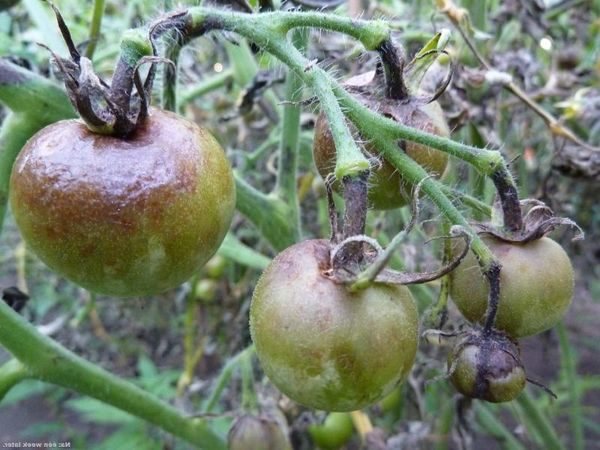

Tomato late blight
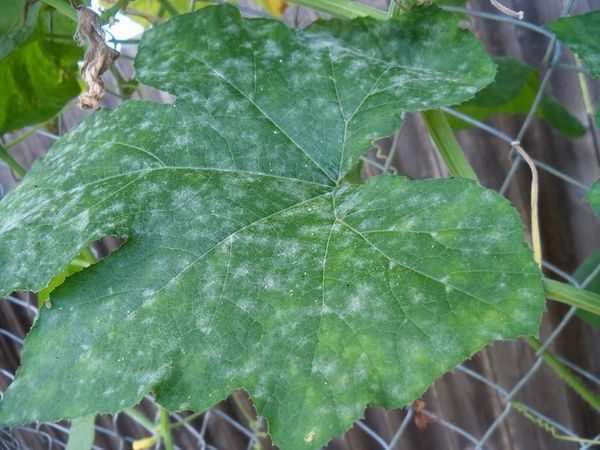

Powdery mildew of cucumbers
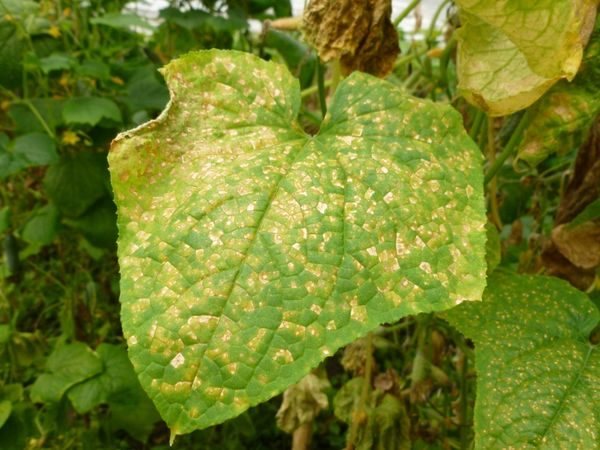

Peronosporosis of cucumbers
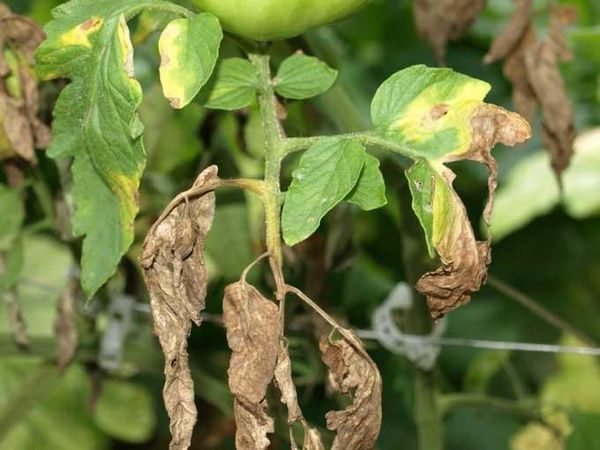

Fusarium tomato
Recipes recommended for alternation with trichopolum and metronidazole solutions
It is possible to process tomato bushes with trichopolum both with a pure solution and with the addition of other drugs that enhance the effectiveness of the medicine.
Classic version
For 10 liters of water, there are 20 tablets, which are crushed and completely dissolved in a small volume of warm liquid, and only after that they are poured into the main amount of water. After 20 minutes, the bushes are sprayed with the prepared solution.
It is advisable to treat small areas with a sprayer; for large plantings, a sprayer is used.
Solutions with brilliant green
They help to enhance the effect of Trichopolum when processing tomatoes. One bottle of brilliant green is poured into a 10-liter solution. Tomatoes are sprayed with trichopolum so that the drug falls on the back and top of the foliage.
Solutions with iodine
Iodine compositions are used more often for preventive spraying of tomatoes, for this purpose, at the stage of development of a vegetable crop, a composition of 10-15 tablets and a bottle of iodine per 10-liter bucket is made. Vegetables are treated with the classic version with trichopolum (20 tablets per bucket of water) by pouring a bottle of iodine into it.
An analogue of Trichopolum is metronidazole. It is cheaper, but has the same efficiency.
In order to prevent the fungus from getting used to the action of Trichopolum, the solutions are changed or combined when carrying out for the treatment of processing measures. Apply:
- 50 g of grated garlic with 1 liter of fermented kefir in a 10 liter bucket of water,
- 1 liter of serum with 25 pipette drops of iodine per 10 liters of water.
Important! Because viruses have the ability to adapt to different agents, they need to be changed.Use traditional methods of dealing with fungal and bacterial lesions of tomatoes, alternating with the use of Trichopolum.
To avoid addiction, the following recipes should be used to alternate the treatments for planting tomatoes:
- Chop 100 grams of garlic and pour two liters of sour kefir. This mixture is designed for 20 liters of water;
- Two liters of whey, 50 drops of iodine in 20 liters of water.
Auxiliary feeding
To make "Trichopol" from phytophthora on tomatoes as effective as possible, you can add ordinary pharmacy brilliant green or an alcohol solution of iodine to its solution. For a ten-liter bucket, it is recommended to take 1 bottle of any of these funds. It is also worth alternating the treatment with the drug with spraying the bushes with other means. For example, you can:
- Take 2 heads of garlic, grind them well and pour a liter of fermented kefir. Stir and pour into a ten liter bucket of water. Spray each bush.
- Pour 25 drops of iodine into 1 liter of whey, mix well and pour into a bucket of water. Process the plants.
When spraying with any of these products, make sure that the escaped liquid is absorbed into the ground near the plants. Thus, it will serve not only as protection against disease, but also as a top dressing for tomatoes.
Trichopolum price for tomatoes and cucumbers
According to gardeners, the use of this medicine helps to do without pesticides. The price of Trichopolum is higher than its substitute Metronidazole.
The drugs can be ordered and bought at an online pharmacy or a usual pharmaceutical outlet in the city. The price of Trichopolum ranges from 80-90 rubles for 20 tablets.
The cost of its counterpart, which is inexpensive, is about 10 rubles. Both medicines can be used for irrigation of cucumbers and tomatoes, their compositions are almost the same, and the price does not affect the quality.
Prevention in the greenhouse and in the open
Bushes need to provide conditions:
- It is best to cover the soil with a layer of hay 10 cm thick.
- Plant the bushes in loose soil with a large amount of organic matter and slightly acidic properties. The distance between the bushes should be at least 0.5 m.
- Tomatoes need constant daylight.
- The bushes are fertilized with nitrogen, phosphorus, potassium. But do not overuse it by feeding tomatoes with nitrogen.
- They must be tied up so that the tomatoes do not lie on the ground.
- In autumn, they cultivate the land in the greenhouse with phytosporin, and in the greenhouse they light a sulfur stick. If the greenhouse is wooden, then it is treated with phytosporin, if it is metal, then with copper sulfate. Before planting, the seeds are immersed in a phytosporin solution for disinfection. Before planting, the roots of the seedlings are placed in a phytosporin solution for 2 hours. The wells are poured with the same drug.
- Water the bushes under the root, so that the drops do not fall on the leaves. This is done early in the morning. Watering is rare, but abundant, so that the top layer of the earth gets wet, in the heat - once every 3 days, and when it is cool once a week. Do not use cold water, as it puts the plants under stress and weakens. Ventilate greenhouses and greenhouses after watering to reduce humidity.
- Do not rip off stepchildren with increased humidity, before and after watering.
- Marigolds are planted near tomatoes, they scare away harmful insects.
Late blight is a dangerous disease from which tomato bushes quickly die. Therefore, it is advised to thin out bushes, remove stepchildren, water and ventilate them correctly. If several bushes are sick with late blight, then all diseased parts are cut off.
Do not treat with solutions, water the plants with them after cutting off diseased parts, since after cutting the leaves, wounds remain and an infection can get into them. After pruning, it is required to leave the plants for 3-4 hours so that the wounds heal a little, only after that the plants can be treated with solutions.
Attention! When using Metronidazole for tomatoes from late blight, you need to remember that this is a medicine, it has contraindications and dosage. Therefore, do not use more tablets than necessary, and do not process tomatoes more than 3 times during the growing season.
Tomatoes cannot be cured of late blight, but the disease can be slowed down. Because of this, you need to do prophylaxis against the disease.
In the closed conditions of the greenhouse, very favorable conditions are created for the development of such a disease as late blight of tomatoes. Treatment in this case will be especially difficult.
Ideally, two greenhouses should be created on the site. In this case, planting tomatoes and, for example, cucumbers can be alternated. However, of course, not every summer resident has such an opportunity. Therefore, when growing tomatoes, the following preventive measures should be taken:
- Use "old" seeds 2-3 years ago. Viruses usually lose their activity in such planting material.
- Grow early varieties and hybrids. In such plants, the fruits ripen much earlier than late blight affects them.
- During the growing season, plants should be fed from time to time with fertilizers containing copper.
- Water the plants in the first half of the day, abundantly and rarely.
Approximately the same preventive measures are taken when growing tomatoes in the open field. In this case, tomatoes, among other things, are planted as far as possible from potatoes and other nightshades.
Reviews of gardeners
- Ekaterina, 32 years old, nurse. For me, a summer cottage is one of the ways to survive, because feeding three children with my salary is not so easy. I know well the composition of Trichopolum and its antiprotozoal action. I used it without fear on the advice of a neighbor in the country, as soon as phytophthora hit a couple of bushes.
The drug worked quite effectively, no leaf burns were observed. But I give such tomatoes to children only after I wash them several times. - Valentin Valentinovich, 67, retired. A dacha for me is youth, help, and pleasure. I take care of every bush with love, I treat every garden bed with my hands.
They advised to use trichopolum from late blight and I tried it. But I bought metranidazole at the pharmacy, after all, it's cheaper. I can say that it is effective. On my site, I dealt with blackness once or twice. But the neighbors even rotted pepper. I will water next year with potassium permanganate. - Ivan, 27, farmer. I grow a tomato in a greenhouse for sale. Trichopolus was used only once in late spring. The facility works, the distribution is suspended quickly. Ripe fruits are not bitter, they have no aftertaste.
Olesya, 29 years old, Voronezh
“I plant tomatoes in the country. I tried to treat the bushes with Trichopolum for late blight. Despite the bad weather and heavy torrential rains, my plants did not get sick after treatment with the drug. In a year I will use Trichopolum with brilliant green. "
Ruslan, 31 years old, Pskov
“The treatment of tomatoes with Trichopolum is good as the prevention of late blight. I use it together with iodine, as it is a top dressing. "
- Olesya: “Gardening is my weakness, one might say a rest for the soul. I always plant tomatoes on my site, there is always enough for salads and for preservation. I struggle with phytophthora attacks by different methods (I heard that there is a quick addiction to one remedy). Last year I found information about Trichopol. At first it was a little strange, because this is a "human" drug. I sat on the forums of the same amateurs - gardeners and decided to try it. I am completely satisfied with the result, even in spite of the rainy summer, all the bushes stood like soldiers. Next year I want to use a recipe with brilliant green, and then again I will have to look for something new. "
- Ruslan: “The processing of tomatoes with Trichopolum is really effective, although I didn’t believe such methods before.I combine it with iodine, because it is an additional food for tomatoes. I did not try to spray potatoes in this way, but I heard that it is more convenient to use the method of processing seed material. It would be interesting to know more about this method, maybe next year I will try an experimental batch. "
Other rose diseases characterized by leaf spot
In addition to black leaf spot, the rose can suffer from the following diseases that affect its foliage:
Cercosporosis
Infection with the cercospora fungus is provoked. This disease manifests itself in the form of small, round spots of brown color.
appearing on foliage and young shoots of shrubs. An interesting feature is that the shade of the border of the spot is darker than its middle. After a certain time, white mushroom bloom can be seen in the infected areas.
Schaceloma
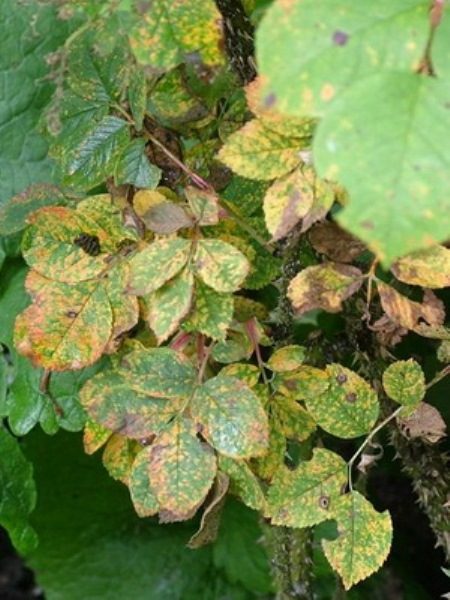

The causative agent of the disease is the fungus of the same name. On the upper side of the leaf there are purple spots, the framing of which is painted in black, the presence of dark crimson stripes is also characteristic. Gradually, the purple color changes to gray, which is due to the formation of spores. On the underside, brown solid formations can be seen. The color of the spots on the stem is similar to the spots on the foliage.
... The only difference will be that the shape changes from round to oblong. In this case, the formations become convex.
Peronosporosis
The second name of the disease is downy mildew. Initially, purple or dark red spots of arbitrary shape are formed on the leaves
, upon closer examination, you can see a thin cobweb on them. Then the leaves roll up into a tube and die off. The stems become cracked, the buds also lose their vitality.
Having considered several diseases, we can come to the conclusion that rose spot is caused by a fungal pathogen
, a favorable condition for which will be humidity, warmth, shade, stagnant air, etc.
Ways to prevent the disease
Any ailment is easier to prevent than to cure. This also applies to phytophthora. There are a number of measures that can help you avoid its appearance:
- The earlier in the spring you plant the plants in the ground, the less chances of their defeat. This also applies to tall varieties, they are also more resistant.
- Place the beds in ventilated areas. In this case, the bushes must be placed in such a way that the leaves do not come into contact with each other. It is recommended to cut the lower branches.
- It is advisable to water the plants exclusively at the root.
- Be sure to tie up lush tomato bushes and cucumber lashes. Contact with the ground increases the likelihood of developing the disease.
Favorable conditions
The development of black spot on the leaves of a rose can be facilitated by factors that do not depend on a person, for example, wet weather or a large amount of rainfall. Also the reproduction of the fungus is affected by the lack of air circulation and the strong thickening of the shrub
.
Also, experienced gardeners recommend finding out in advance the complete information about the acquired variety, including resistance to black spot. If the plant is immune to the disease, then the risk of infection will be minimized, otherwise the fungus can comfortably multiply on the leaves of the rose.
Symptoms
Most often, polyanthus, tea or climbing varieties are affected by the fungus.
Experts identify the following signs of black spot
:
- bush stops growing
and develop; - dark spots on the leaves can reach 15 centimeters
in diameter; - shape of spots
resembles the sun; - disease develops from the bottom up
; - gradually a few small spots combine into one
; - affected leaves turn yellow
roll up and fall off; - bushes thin out sharply
, the colors are formed much less.
Black spot is very similar to powdery mildew, you can distinguish them by the sign that the spot rises from the bottom up, gradually gaze at the whole plant.

